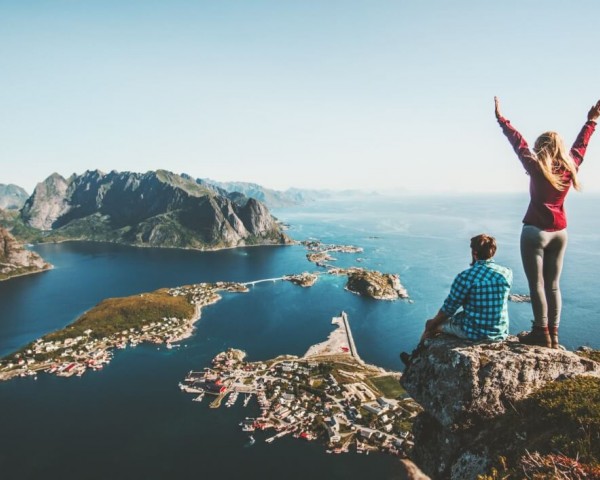Many tourists escape the heatwave by opting for a refreshing northern European holiday. Positioned at the top of the continent, countries such as Norway and Sweden are now promoting the concept of a “coolcation” to entice visitors to their moderate climate.
Norway has been a popular destination among Europeans for its lush green landscapes, mountains, glaciers, and iconic route that meanders through the mountains towards the fjords.
Cooler, Less Crowded Places
In 2023, the number of overnight stays by foreigners increased by 22% in Norway, setting a record in August. In Sweden, the increase was 11%, according to official statistics. This growth was attributed to the end of health restrictions in 2022 and a drop in Scandinavian currencies.
A survey conducted in Germany for the promotional organization Visit Sweden revealed that two out of five people plan to change their travel habits due to the heat in southern Europe. They often plan to do so by choosing other times of the year or opting for new destinations.
Susanne Andersson, head of the promotion organization Visit Sweden, mentioned, “Coolcation is not just about the weather. It’s about traveling where the weather is a little cooler but also cooler because there are fewer people.”
Rather than crowded Mediterranean beaches and scorching heat, many now prefer to dip in a lake or fjord or breathe fresh air on a mountain hike in relative isolation. This shift in preference has been brought on by the partial closure of the Acropolis in Athens in June and forest fires in other parts of southern Europe.
According to the UN climate experts (IPCC), it is “almost certain” that the frequency and intensity of extreme heat and the duration of heatwaves have increased since 1950 and certainly will continue to do so with global warming. By 2050, about half of the population in Europe could be exposed to a very high risk of heat stress during the summer, and the number of deaths linked to heat stress could double or even triple with global warming of between +1.5°C and +3°C.
Overcrowded Villages
Rovaniemi, located in Finnish Lapland and straddling the Arctic Circle, experienced a 29% increase in overnight stays last year. Sanna Kärkkäinen, responsible for promoting tourism in the area, noted that the “coolcation” trend has been ongoing for years and has gained momentum due to the extremely hot summers in southern and central Europe.
However, this tourism surge has brought problems, such as the proliferation of Airbnb and issues with inconsiderate tourists. “What concerns us the most is the overcrowding,” pointed out Jan Ove Tryggestad, who served as the mayor of a Norwegian town from 2011 to 2023. He mentioned the recent arrival of a massive cruise ship capable of accommodating 6,000 passengers and 2,000 crew members. “This is a small village. In Hellesylt, there are only 280 to 300 residents in the winter. Naturally, it’s a bit of a cultural shock when such a large number of people, by European standards, suddenly descends upon us,” he admitted. “But we are adapting.”












